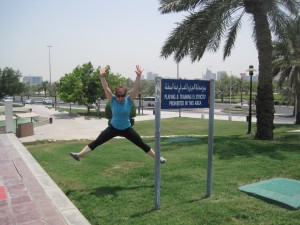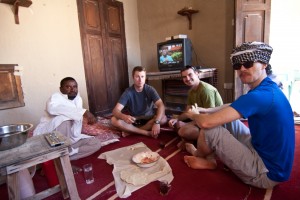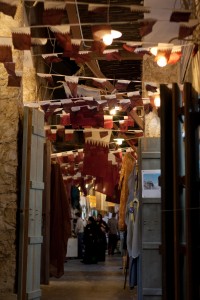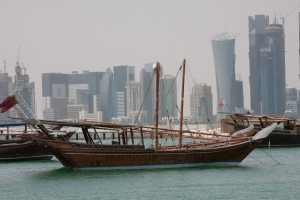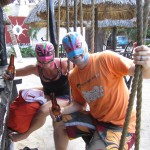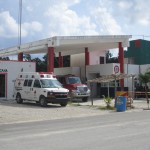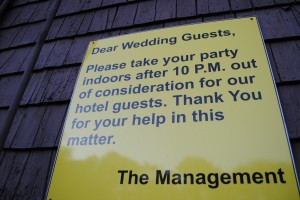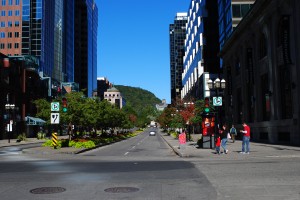A few weeks ago I read a blog that really caught my attention. The author explained why, as a sports and ortho Physical Therapist, he chooses not to use manual therapy. I’ve been thinking about his blog ever since I read it – it has frequently been the last thing I think of at night, the first thing I think of in the morning, and I think of it many times throughout the day as I work manually with the vast majority of my patients. My curiosity about this author and his stance against manual therapy has lead me on a bizarre journey finding other blog posts claiming manual physical therapy is a “sham,” “quackery,” and “pseudoscience”. Many of these manual therapy nay-sayers claim it doesn’t do anything meaningful. They say manual therapy is only a way for a clinician to act compassionately and/or cause indirect effects through being attentive to their patients. Essentially, they claim manual therapy’s benefits are an elaborate placebo.
When I came upon the first internet post that introduced me to the world of manual therapy nay-sayers, the post had already been out there on the web for 8 months. I came across it when someone in the online PT circles reposted it on Twitter. This reposting is one of over a dozen, and many more people comment on Twitter sharing their support and agreement. Apparently, there is an international network of physical (and physio) therapists who go from blog to blog verbally patting each other on the back about their distaste for manual therapy. They frequently refer to themselves as “recovering manual therapists,” they reassure each other with confident words about how novel each of them is to have stepped out of the populist belief that manual therapy is a good thing. The worst part about it is, many of these people are involved in professional leadership, research, blogging, and teaching – these people consider themselves leaders.
In this, my first introduction to the world of manual therapy nay-sayers, I was worried and confused and shot a quick email to a colleague. He is a leader, researcher, educator, and blogger – I knew he would know more than I did. In the first day I sent him the email, I heard nothing and nervously began to think, “Oh no, he’s one of them!” I woke the next morning and was comforted by his reply. He’d had experiences in talking directly with the manual therapy nay-sayers about their ideas – he described it plainly as, “a disturbing growing trend.” He is not a fan of these folks and their ideas. Frankly, neither am I.
If you’re like me, this is the first you are hearing of Physical Therapist researchers speaking out against manual therapy. Manual therapy is a corner stone of orthopaedic rehab… right? One of the articles I read over the past few weeks is a blog that has a robust comment chain following the article. The blog is a summary of a research article that claimed to be the end-all of spinal manipulative therapy research,
“Prof Menke concludes that more research is clearly NOT needed… That which is already known about SMT [spinal manipulative therapy] for back pain is quantifiably all that is worth knowing.”
Did you catch that? Th, th, th ,th, that’s all folks! Nothing more to see here. What an asinine statement: This guy summarized spinal manipulation in his research article and has it all handled for us! Here’s the link to the blog: (Spinal manipulative therapy: a slow death by data?) If you are an orthopaedic PT, I recommend you read the comments, they are scary – I, however, do not recommend you dig deeper to further posts and links, it gets downright frightening. One commenter on A Slow Death by Data states,
“My favorite ‘hands on’ technique is what most people call a ‘handshake’.”
He goes on to explain how his superior attentiveness and compassion to his patients are the secrets to his success without manual therapy – to his credit, he admits using his hands for “seeking more serious pathology.” He then is repeatedly praised for his comments from the world of anti-manual therapy. How can these obviously intelligent and seemingly forward thinking people who are strongly rooted in Evidence Based Practice (EBP) believe that manual therapy is unimportant and, further more, that their treatments performed without manual therapy are superior!? This goes against everything I have ever learned and experienced as Physical Therapist working with orthopaedic patients.
I keep asking myself what could possibly be motivating the manual therapy nay-sayers. From what they write in their posts and comments, I believe many of them have had bad experiences with manual therapy in their careers, and I do not mean that as a slam. Some of these internet authors openly write about past experiences interacting with colleagues who claim manual therapy as a way to keep clients dependent on their services. If this is why they have grown so cynical of manual therapy, I am so sorry for the experiences they have had in the past that soured them to manual therapy. I have experienced similar misconceptions in my own PT career. I started out working in only high-volume sports and orthopaedic clinics through many of my student experiences and many of my jobs early in my career as a traveler. I once saw a clinic owner treat 8 workman’s comp patients in one hour. In the last 5 years, I have worked almost exclusively for clinics that book one hour treatments for their patients. I don’t think I could ever go back to the rat race of 2, 3, and 4 patients per hour, no way! I broke out of my bubble by seeing other models for delivering PT. I would suggest that a therapist who believes that manual therapy is no more than a pacifier go out and gain new experiences in manual therapy. There is a vast, vast majority of us manual therapists out there who use our hands because our patients get better faster and stay away longer – not to feed patients’ dependence on us.
Maybe these nay-sayers have only been exposed to manual therapy styles that they don’t see the value in. I have to admit, there’s a group of manual therapists that I don’t see eye-to-eye with either. I once worked for a private practice that had a manual therapy fellowship program built on a chronic pain background. The treatments were based on the smallest minutia I have ever seen in my life – for instance, a “pelvic ring instability” causing shoulder pain. Yikes! Way too many of the patients the other clinicians treated were getting SI belts to “stabilize their pelvic ring.” The therapists at that clinic – all brilliant, motivated, and extremely well intentioned people – were looking at the smallest details in human kinematics as their manual therapy targets. I am very much different. I consider myself much better with concepts than with the tiny specifics. If something is abnormally stiff, I want to move it. If something is hypomobile in the spine, it’s going to be a whole section of the spine, not a single level that I move. I do not believe in improving extension of one side of one segment of the spine – you just can’t do it, and our hands are not that specific – the research supports me in this belief. As clinicians, we are bad at determining joint mobility beyond three categories: hypomobile, normal, and hypermobile. If you find yourself frequently describing subrankings of these 3 categories (mildly, moderate, etc), research does not support our ability to be that discerning. Our hands may not be as specific as some will claim, but they are beneficial to a patient far beyond a handshake. My point is, I could get on board with a faction of PTs saying, “Hey gang, all this specific mumbo-jumbo is a bit much, lets get back to basics – move what’s stuck, stabilize what isn’t, and manipulate a group of spinal segments when indicated.” ….this is not the message I’m getting from the nay-sayers. Do not lump manual therapy together as one intervention. Manual therapy is many different, specific interventions. Some are more effective than others and the experience of the person providing those interventions matters very much.
OK, it is time to get back to the title of this blog.
So, why am I a manual therapist? Because it works. Not, “In my experience it works,” but because the research shows it works. It does!!! Patients get better faster for longer with manual therapy than without. What could be more mechanical and tangible than putting your hands on a restricted knee and straightening it, then performing a joint mobilization and straightening it further. If someone’s neck hurts, I’m going to see if manual traction helps – because it’s what the research indicates I should do, and because by using my hands, I am less likely to cause an increase in symptoms than traction performed mechanically. Then, if indicated, I’m going to manipulate the patient’s thoracic spine, because the research shows it will probably decrease their pain immediately. The use of hands-on techniques to decrease adhesions in skin or tendons through something as simple as transverse friction is undeniable (and well supported by research). These techniques are all specific things that require skill to apply and have very direct and mechanical effects. If you think the examples I’ve just given are too passive for your liking, and you want a patient more involved in their own rehab, let’s do some mobilizations with movement (Mulligan Concept) – how about some manually resisted PNF patterns? And, I really hope even the most radical of the manual therapy nay-sayers are putting their hands on patients to cue them with exercises and to improve harmful mechanics.
This is truly a case of throwing out the baby with the bathwater. Manual therapy is not one thing, it is a collection of many different techniques. If there are certain manual therapy techniques that don’t work, let’s address those specifically. I’ll gladly accept an argument for specific techniques over others. I’ll also gladly hear arguments that particular manual techniques are working differently than we currently believe they are. But don’t lump all manual therapy together and say it doesn’t work, it’s very well documented that much of it does. Let’s change this manual therapy versus no manual therapy conversation into a what manual therapy works best and when conversation. Those of us having this conversation already, should stop tolerating those that are absolute manual therapy nay-sayers, they make all of us look really bad and inhibit any productive conversation from happening.
As a Physical Therapist, if you’re not using manual therapy with your sports and orthopaedic patients, what the hell are you doing!? You’re not doing physical therapy. Physical Therapists are restoring function, motion, and abilities to hundreds of thousands of people every day – the ones doing it best are using their hands, a lot.
Let’s hug it out, the comments section is below. Please share your thoughts.
-By James Spencer, PT, DPT, OCS, CSCS,


